Q
honda city full tank how many km
The Honda City's full-tank range in Malaysia really depends on the specific variant and your driving conditions. Take the 1.5L i-VTEC model, for example. With its 40-litre fuel tank and the official fuel consumption figure of 5.4 litres per 100 km (measured under Malaysia's NEDC standards), theoretically, you could squeeze out around 740 km on a full tank. But let's be real, the actual distance you'll cover varies a lot based on road conditions, how you drive, and what you're carrying. In stop-and-go city traffic, you might only get 550-600 km, while steady highway cruising could see you edging closer to 800 km.
It's worth highlighting that the fifth-gen City's Earth Dreams technology does a solid job boosting fuel efficiency, thanks to a lighter body and an efficient fuel injection system. To keep those economy figures in check, we'd recommend owners regularly check their tyre pressure (keep it between 200-220 kPa) and replace the air filter on schedule. And let's not forget Malaysia's hot weather – cranking up the AC will typically add about 10-15% to your fuel usage. If you want to get a precise handle on your own driving style's impact on fuel consumption, use the car's on-board computer for real-time fuel economy readouts or log each refuel in a phone app to calculate your actual range.
Special Disclaimer: This content is published by users and does not represent the views or position of PCauto.
Related Q&A
Q
What segment does Honda City belong to?
Honda City belongs to the B-Segment vehicle category. It has a wheelbase of 2,600mm, which meets the standard for B-segment cars with a wheelbase ranging from 2,500mm to 2,700mm. Moreover, Honda City offers a comfortable seating space that can accommodate five passengers. Meanwhile, its safety features are also quite comprehensive, all of which match the characteristics of a B-segment car.
Additionally, in the local market over the past few years, as a non-domestic B-segment sedan with high sales volume, the Honda City has always been the brand's flagship model of Honda. Whether it's for daily city commuting or family trips, it can perform very well. It also fits the characteristics of B-segment cars in terms of market positioning and actual usage scenarios.
Q
What is the residual value of Honda City?
The residual value of the Honda Civic can vary significantly due to multiple factors, including the vehicle's age, mileage, overall condition, and the current state of the local used - car market.
Honda is a well - known and highly reputable brand in Malaysia. Generally speaking, since Honda is renowned for its reliability and relatively low maintenance costs, the Honda Civic has a better chance of retaining its value compared to some less well - known brands.
Newer Honda Civic models (such as the 2023 and 2024 versions) may have a relatively high residual value if they are in excellent condition and have low mileage. For example, if a 2023 Honda Civic 1.5 S was purchased for RM 84,900, after one to two years of moderate use (assuming normal wear and tear, no major accidents, and proper maintenance), according to market conditions, it may retain a large portion of its original value, perhaps 60% - 75% of the purchase price.
Older models, like those from 2018 - 2020, will have a lower residual value. The vehicle's age, potentially higher mileage, and the launch of new - generation models will all reduce their value in the used - car market. However, if these older models are well - maintained, they can still be sold at a reasonable price, possibly around 30% - 50% of their original purchase price.
Market demand also plays a crucial role. If there is high demand for used Honda Civics in Malaysia, the residual value will increase. On the contrary, if there is an oversupply of used cars in the market, the residual value may decrease.
Q
What's the engine displacement of Honda City?
The displacement of the Honda City ranges from 1498cc to 1499cc. It is equipped with a 1.5-liter DOHC i-VTEC in-line four-cylinder naturally aspirated gasoline engine. This configuration can provide the vehicle with a stable power output to meet the needs of daily driving. Take the 2023 Honda City as an example. Multiple vehicle models all use this displacement engine, paired with a CVT continuously variable transmission. The official combined fuel consumption is about 5.6L/100km, combining both power and fuel economy. In addition, there may be differences in engine tuning and configuration details among different model years of the Honda City, but the displacement remains at this level.
Q
What engine is equipped by Honda City?
There are various engines equipped by different models of Honda City. Commonly, it is equipped with a 1.5-liter DOHC i-VTEC inline-four naturally aspirated gasoline engine, which delivers an output power of 121 PS (119 hp/89 kW) and a peak torque of 145 Nm, paired with a CVT. Additionally, for example, the 2023 Honda City 1.5L e:HEV RS is HEV, adopting a naturally aspirated intake system. Its engine has a maximum horsepower of 98 PS, and the electric motor has a maximum horsepower of 108 PS. The engines of different model years and specific variants may vary in power, torque and other aspects. The application of engine technology results in different performances of the vehicles in power output and fuel economy, allowing consumers to make choices according to their needs.
Q
What is the gearbox type of Honda City?
The gearbox types of Honda Civic vary depending on the model and year. Most Honda Civic models are equipped with a continuously variable transmission (CVT). This gearbox achieves smooth gear - shifting through a continuously variable gear ratio. Compared with traditional transmissions, it reduces the sense of jerk and allows the engine to operate at its optimal condition, thereby improving fuel economy and the smoothness of power output.
All 2023 Honda Civic 1.5L gasoline - powered models (S/E/V/RS) are equipped with CVT.
The 2023 Civic 1.5L e:HEV RS hybrid model is equipped with an electronic continuously variable transmission (E - CVT). The motor and the engine work together to optimize acceleration smoothness and energy management efficiency.
Older models such as those from 2018 - 2022 also mainly use CVTs, striking a balance between driving comfort and fuel economy.
The characteristics of the CVT make it an ideal choice for urban commuting, especially for users who value smoothness and fuel savings.
Q
What is the pitch circle diameter of Honda City?
The pitch circle diameter of the Honda City is 4x100, which is the standard specification used for most models of Honda in Malaysia, applicable to the 5th generation (2014 - 2020) and 6th generation (2020 to present) models. This measurement indicates that the four bolt holes of the wheel hub are arranged on a circle with a diameter of 100 mm, making it compatible with popular local models such as the Proton Saga and Perodua Myvi, facilitating wheel hub replacement or upgrades for owners.
It is important to note that, in addition to PCD, other parameters such as the center bore (CB), offset value (ET), and wheel diameter must also be verified during modifications. For example, the factory-fitted tire sizes for the 6th-generation Honda City are 185/55 R16 or 195/55 R16 (depending on the variant). It is recommended to maintain specifications close to the original when replacing wheels to ensure the suspension system and odometer calibration remain unaffected.
To verify wheel hub data for specific model years, refer to the tire pressure label on the door frame or consult authorized dealers.
Q
Does Honda City support Apple Carplay?
Currently, the latest generation (the 6th generation, from 2020 to present) of the Honda City sold in Malaysia comes standard with Apple CarPlay functionality (which requires an iPhone to use). Mobile phone connectivity is achieved through the 7 - inch or 8 - inch touchscreen on the center console (depending on the vehicle model version). This feature supports core applications such as navigation, music playback, and message viewing, and can be operated via Siri voice control.
It's important to note that the entry - level S version is equipped with Bluetooth audio and a USB port but does not have a touchscreen, so it does not support CarPlay. On the other hand, the E, V, and RS versions are fully equipped with the intelligent connectivity system.
If users own an older 5th - generation (2014 - 2020) Honda City, they need to confirm whether it is equipped with the compatible DA intelligent screen system (some later minor facelift models support it). Earlier versions may require a post - sales upgrade of the head unit to expand this functionality.
It is recommended to check the specific configurations through the official Honda Malaysia website before purchasing a car, or directly visit an authorized dealer to experience the actual vehicle functions.
Q
What type of tire is equipped by Honda City?
In Malaysia, the original - equipped tire brands of the Honda City vary depending on different models and configurations. Currently, common tires include Yokohama BluEarth - GT (Yokohama), Bridgestone Turanza T005 (Bridgestone), and Continental UC6 (Continental), etc., specifically depending on the model version and production batch.
Taking the 2023 model as an example, the City RS version usually comes standard with Bridgestone Turanza T005 tires in the size of 195/55 R16, which focus on noise reduction and comfort. On the other hand, mid - and low - end models may use Yokohama or Continental tires.
The selection of original tires mainly consider energy efficiency, durability, and wet - weather performance, which is suitable for Malaysia's rainy climate. It is recommended that car owners try to choose brands with the same specifications and similar performance when replacing tires to ensure driving safety and optimal handling performance. To confirm the tire brand of your vehicle, you can check the markings on the tire sidewall or refer to the user manual.
Q
Is Honda City a good car?
The Honda City is a vehicle with many highlights but also some certain drawbacks. Its advantages are quite obvious. In terms of design, it has absorbed the essence of popular Honda models like the Accord and Civic. The exterior is stylish and can meet the aesthetic needs of young consumers. The appearance of some minor facelift models has been optimized. For example, the design of the bumper has been improved, and the combination of the taillights with the rear spoiler makes it look more sporty.
In addition, it has abundant interior configurations. It has an approporiare screen size and armrest design, which enhance the riding comfort and storage space. Some models will also be equipped with wireless CarPlay and a wireless mobile phone charging panel.
It has excellent fuel economy. For instance, the official combined fuel consumption of the 1.5 - liter naturally aspirated engine version is as low as 5.6L/100km, and the hybrid version is even lower, reaching 3.6L/100km. The safety configuration is also relatively comprehensive, with standard features such as ABS anti - lock brakes, vehicle stability control, and multiple airbags.
However, it also has its disadvantages. Some gasoline - powered models use a front disc and rear drum brake system, which may be slightly inferior in braking performance compared to the front and rear disc brakes. Most of the in - car seats are manually adjustable, lacking features such as electric adjustment, ventilation, and heating, so there is a lack in comfort - related configurations.
Q
What is the width of Honda City?
Currently, the body width of the Honda City (6th generation, from 2020 to present) in Malaysia is 1,748 millimeters. This width is a mainstream size among compact cars in the same class (such as the Toyota Vios and Nissan Almera), ensuring both in - car space comfort and good maneuverability during busy city driving. It should be noted that this data refers to the widest part of the car body, excluding the rear - view mirrors. If the width with the exterior rear - view mirrors unfolded is included, the total width is approximately 1,950 millimeters, which has a certain impact when entering or exiting narrow parking spaces or alleys. If you're considering buying or driving a Honda City, it's advisable to first experience whether its body size suits common parking spaces or road conditions in Malaysia, especially in traffic - congested areas like Kuala Lumpur.
Latest Q&A
Q
how much does a bmw ix cost
Right now, the Mazda 3 Hatchback is available with a hybrid (M Hybrid) option in global markets, but there's still no fully electric version. Here in Malaysia, the Mazda 3 Hatchback lineup is pretty much all about the Skyactiv-G petrol engines – hybrids and EVs haven't made their way here yet.
Mazda's hybrid setup pairs an efficient internal combustion engine with mild hybrid tech. It's all about recovering energy and using the electric motor to give the engine a little help, which translates to better fuel economy. Definitely a solid pick if you're someone who prioritizes saving at the pump.
If you've got your heart set on a greener ride, though, there are other hybrid options in Malaysia. Think models like the Toyota Corolla Cross Hybrid or the Honda City e:HEV – those are worth checking out.
Mazda's probably going to expand its electrified lineup down the line, but for now, your best bet is to hit up your local dealer to see what's new. Oh, and don't forget – the Malaysian government offers tax incentives for new energy vehicles. It's a good idea to look into the latest policies before you buy, so you can find the perfect car that fits both your needs and the current offers.
Q
bmw ix how to open charging port
In the current Malaysian market, the Mazda 3 Hatchback is offered in three main trim levels for consumers to choose from: the entry-level Mazda 3 Hatchback 1.5L Mid, the mid-range Mazda 3 Hatchback 2.0L High, and the top-spec Mazda 3 Hatchback 2.0L High Plus.
The 1.5L Mid is powered by a 1.5-liter Skyactiv-G engine, making it a solid pick for those who prioritize fuel efficiency. It comes equipped with LED headlights, an 8.8-inch infotainment screen, and essential safety features like blind-spot monitoring.
Stepping up to the 2.0L High gets you a more potent 2.0-liter engine, along with upgrades such as leather seats, power-adjustable driver's seat, and a more comprehensive i-Activsense safety suite.
At the top of the range, the 2.0L High Plus adds even more premium touches, including a Bose sound system, a panoramic sunroof, and a 360-degree surround-view camera.
Across all trims, the Mazda 3 Hatchback boasts the brand's distinctive Kodo design language, with an interior crafted from high-quality materials that really showcase that Japanese attention to detail and fine craftsmanship.
Malaysian buyers can pick the trim that best fits their budget and needs, and it's worth noting that Mazda models come with a 5-year free maintenance package locally – a nice bonus that adds to their long-term ownership value.
Q
bmw ix how much
In Malaysia's hot hatch segment, the Mazda3 Hatchback goes head-to-head with heavyweights like the Honda Civic Hatchback, Toyota Corolla Hatchback, and Volkswagen Golf. What really makes the Mazda stand out though? That signature Kodo design language and a cabin that feels way more premium than its price tag suggests. Those sleek lines and high-quality materials inside? Total eye-catchers in this class.
Under the hood, Mazda's Skyactiv-G engine strikes a solid balance between fuel efficiency and pep. Sure, it might not match the Civic Hatchback's 1.5T in raw horsepower numbers, but the linear acceleration and sharp handling tuning here are pure joy for drivers who actually love being behind the wheel.
Space-wise, the Mazda3 Hatchback's rear legroom is a bit tighter than the Corolla Hatchback's, but trade that for seats that feel more supportive on long drives and cabin quietness that drowns out road noise better than most rivals. And let's not sleep on the standard i-Activsense safety suite – it's packing class-leading active and passive tech that should definitely appeal to safety-conscious Malaysian buyers.
Pricing lands it slightly above its Japanese competitors but undercuts the European players, carving out a nice sweet spot in the market. So, for Malaysian shoppers prioritizing head-turning design, engaging driving dynamics, and a cabin that feels genuinely upscale, the Mazda3 Hatchback is a strong contender. But if outright space or blistering turbo power is your top priority? You might want to cross-shop those other options.
Q
how much is ix bmw
The current Mazda3 Hatchback in Malaysia offers a palette of exterior colors including the signature Soul Red Crystal, Machine Gray, Snowflake White Pearl, Deep Crystal Black, and Polymetal Gray. These hues aren't just about showcasing Mazda's iconic Kodo: "Soul of Motion" design philosophy—they're brought to life using the brand's proprietary high-gloss painting technology, which gives the bodywork incredible depth and dimension that shifts beautifully under different lighting conditions.
Standouts in this lineup are undoubtedly Soul Red Crystal and Polymetal Gray. Soul Red Crystal achieves its head-turning depth through a unique layering process of aluminum flakes and reflective coats, while Polymetal Gray uses a multi-layer application to create a sophisticated metallic finish with a modern edge.
For Malaysian buyers, choosing a color isn't just about personal taste—practicality plays a role too. Darker shades like Machine Gray or Deep Crystal Blue really accentuate the 3's sculpted lines but can show fine scratches more easily, whereas lighter options like Snowflake White Pearl tend to hide dirt better and stay cooler under our intense tropical sun.
Mazda's paint technology is built tough, with excellent rust resistance and durability to handle Malaysia's rainy, humid climate. A regular wax every few months will help keep that factory-fresh shine locked in for years to come, though—definitely worth the little extra effort.
Q
berapa harga bmw ix
To experience the Mazda 3 Hatchback, you can schedule a test drive at authorized Mazda dealerships throughout Malaysia, such as Bermaz Motor in Kuala Lumpur, Mazda Auto Fabulous in Penang, or Mazda Southern in Johor. It is advisable to first visit the official Mazda Malaysia website to locate your nearest dealership and make an advance appointment to ensure the availability of the test drive vehicle.
The Mazda 3 Hatchback has gained popularity for its excellent handling and the striking Kodo-Soul of Motion design language. It is equipped with the efficient Skyactiv-G engine and i-Activsense safety technology. During the test drive, we recommend paying particular attention to the precision of the steering response and the quality of the interior materials. It is also beneficial to compare the differences between various trim levels, such as the High Plus and High Spec versions.
If you are considering a purchase, be sure to inquire with the dealership about current promotional offers and the comprehensive 5-year manufacturer warranty. This model is well-suited for young families seeking an engaging driving experience without compromising on everyday practicality.
View MoreRelated News
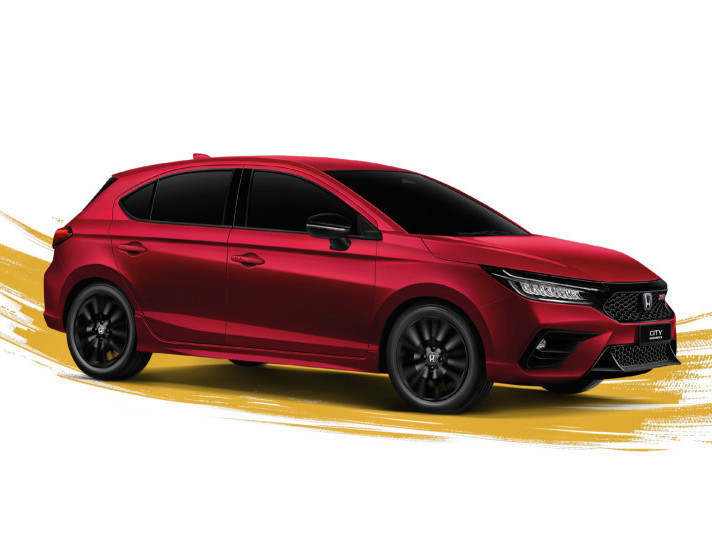
Honda City Hatchback Interior: Surprising Space Inside a Compact Body
WilliamJul 16, 2025
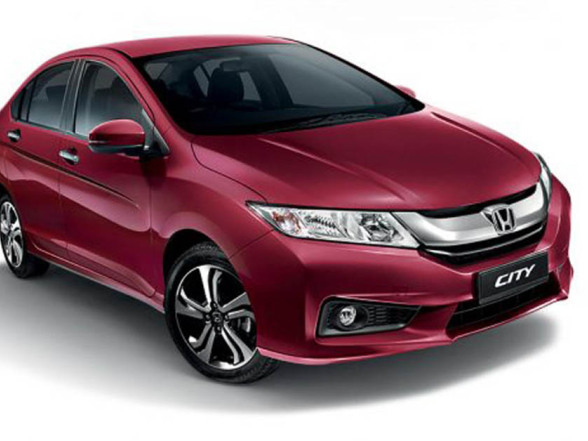
Should You Buy a Used Honda City GM6? – Get Idea Here!
RobertJun 23, 2025
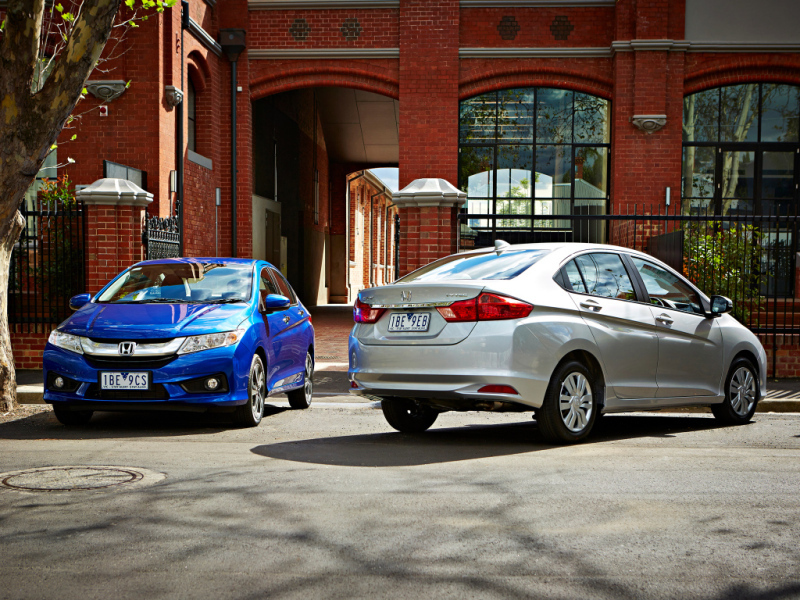
Is it worth buying a used Honda City GM7?
LienMar 7, 2025
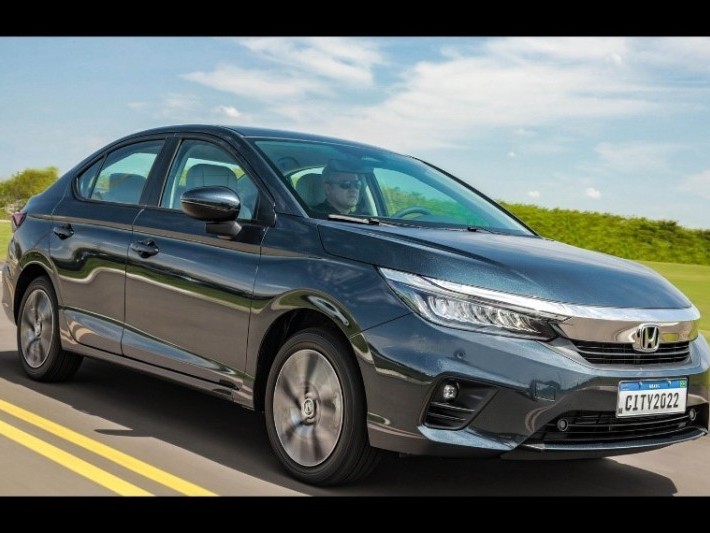
Limited to 99 units! Honda City SE Special Edition goes on sale, accused of clearing inventory?
LienSep 27, 2024
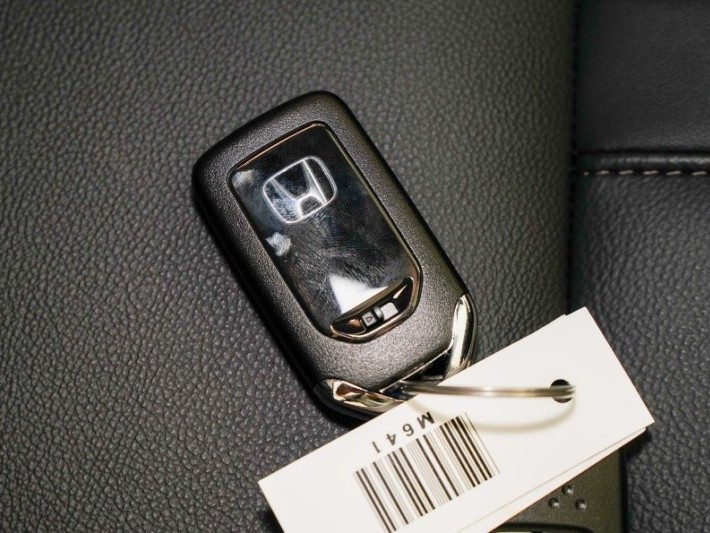
The cost of using Honda City revealed: How much does it actually cost to use for 5 years?
Kevin WongSep 19, 2024
View More

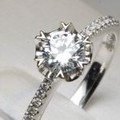










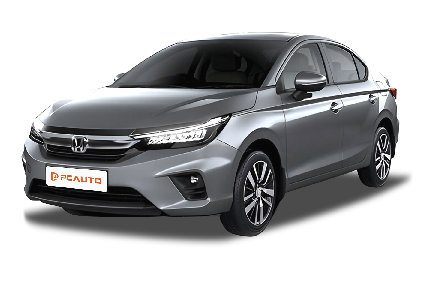
 Cars
Cars




Pros
Cons